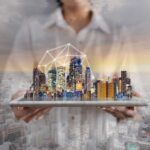Florida is home to some really great inventions
Florida is an interesting state for African American history. Because it was owned by the Spanish for the first part of its existence, Florida treated slavery a little differently than other states. There were slaves under Spanish rule, but the Spanish also made it possible for freed slaves to live amongst them. They even offered refuge to escaped slaves from other colonies to help grow their population. Of course, after the United States took over Florida this changed. But even so, Florida was home to more freed slaves than other southern states. Its identity as part of the south but also different from other southern states has marked Florida’s treatment of African Americans for generations. To learn more about black history in Florida here are some amazing museums you can visit.
A Quinn Jones House
-
Gainesville
A Quinn Jones House was the home of Florida educator Allen Quinn Jones. Jones was the first principal of Lincoln High School, the second accredited high school for African American students in the state which opened in 1923. Jones spent his time at Lincoln High School and the rest of career working to improve the education prospects of black students across the state. The home is currently being renovated with plans to turn it into a museum.
Old Dillard High School
-
Fort Lauderdale
Old Dillard High School was the first school for black students in Fort Lauderdale. It opened in 1924 and was named for Dr. James Hardy Dillard, an educator philanthropist, though it was mostly referred to as “The Colored School”. It now houses The Old Dillard Museum, which focuses on the local African American culture and their contributions to the community.
Brewster Hospital
-
Jacksonville
Brewster Hospital was the first Hospital in the country to treat only African-American patients. It opened in 1901 because most nearby hospitals refused to treat African-Americans. It was also the first hospital in the country to train African-Americans in the medical profession. It eventually closed after the Civil Rights Act of 1964 made it impossible for other hospitals to turn patients away based on skin color.
Kingsley Plantation
-
Jacksonville
The Kingsley Plantation is currently part of Timucuan Ecological and Historic Preserve managed by the U.S. National Park Service. It is a great example of how slavery in Florida (which was under Spanish rule) differed from slavery in the rest of the south. Zephaniah Kingsley was a slave trader who eventually settled here to start his own plantation. He was pro-slavery, but he also believed, like many people in Florida at the time, that slaves should have the ability to earn their freedom. Kingsley supported the rights of freed blacks including his wife, who was a thirteen year old slave when he married her. She went on to run the plantation for many years. Kingsley also believed in polygamy and went on to have relationships with three other former slaves with whom he fathered many mixed-race children. Today the plantation has been renovated to appear as it did when Kingsley and his unique family lived there. It is open to public and free to visit.
Julee Cottage
-
Pensacola
Julee Cottage was the home of a freed black woman named Julee Panton in the early 1800s. Little is known for certain about this Julee Panton, but it is widely believed that she spent most of her life helping other slaves to buy their freedom and helped them establish their lives in freedom. The cottage now serves as black history museum.
John G. Riley House
-
Tallahasse
The John G. Riley House was the home of John Gilmore Riley, an African-American man who was born into slavery in 1857. When he died nearly 100 years later he was a millionaire. Education was very important to Riley. He mostly educated himself in his younger years and went on to become a teacher and eventually a principal of Lincoln High School, the local African American school. The house is now a museum dedicated to local black history.
Tookes House
-
Tallahassee
The Tookes house was the home of Dorothy Nash Tookes. Tookes eventually turned the house into a hotel, which was the only hotel in the area that offered lodging to African-American visitors to Tallahassee. Several prominent guests stayed there including singer Lou Rawls and author James Baldwin. The house is currently owned by Tookes’ grandson: Ron McCoy. He plans to renovate it as a bed and breakfast and a museum.

Well’sbuilt Hotel
-
Orlando
Well’sbuilt Hotel was a hotel built by African-American physician, Dr. William M. Wells in 1926. He built the hotel to house visiting African-Americans who could not stay in other segregated hotels in the area. He also built an entertainment venue called South Street Casino where black entertainers could perform. Together the hotel and the casino became the center of the African-American community of Orlando. Many prominent performers stayed here including Ella Fitzgerald, Count Basie, Jackie Robinson, Ray Charles, Louis Armstrong, and B.B. King. The hotel is now a museum that highlights the African-American history and Civil Rights movement in Orlando.
Zora Neale Hurston House
-
Eatonville
The Zora Neale Hurston Museum was once the home of prominent African-American author Zora Neale Hurston. Hurston was born in 1891. She grew up in this house and was inspired to write many of her most well-known works from her experience growing up as a black kid in Florida. Her home is now a museum of arts showcasing works of art by African-American artists.
St. Rita’s Colored Catholic Mission
New Smyrna Beach
St. Rita’s Colored Catholic Mission was a Catholic church for African-Americans built in 1899. At the time it was the only Catholic church open to African-Americans in the area. It is now the Black Heritage Museum, a museum dedicated to local black history.









